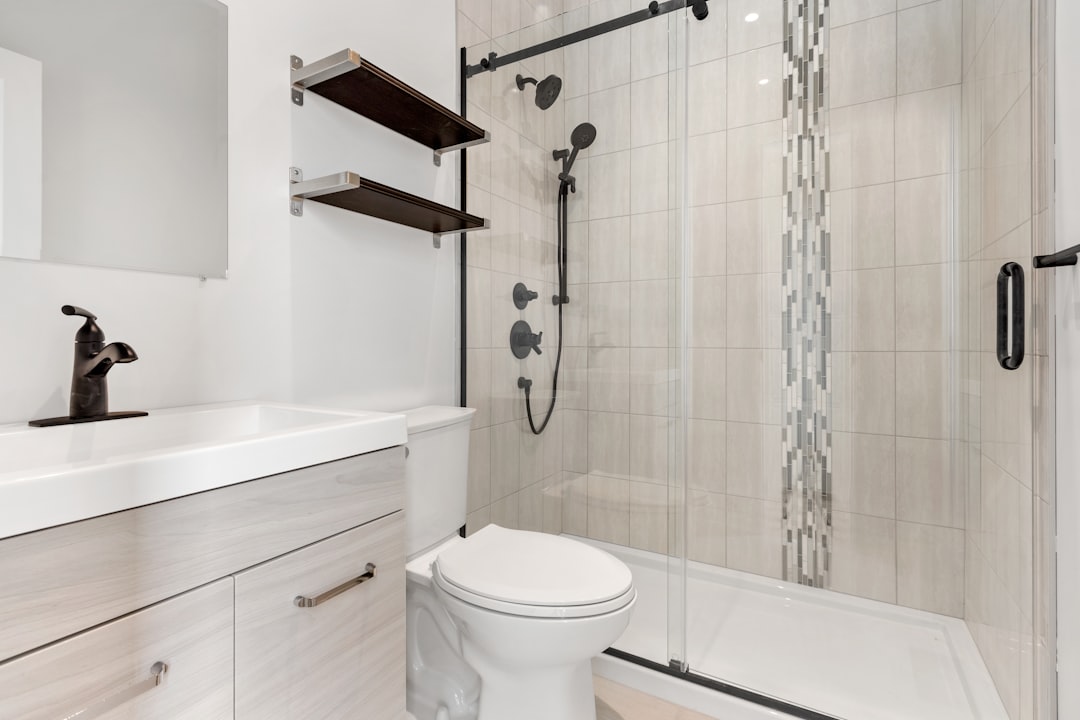There is no doubt that bathroom mould poses a threat to both the health of a person as well as the structural integrity of their house. Although not all types of mould are toxic, some types, such as black mould, can produce toxins that are harmful when inhaled or if exposed for extended periods.
We will explain the potential health risks associated with bathroom mould and its toxicity in this article.
Understanding Bathroom Mould
Even though bathroom mould may seem like a minor problem, it can be quite problematic. If mould spores are released into the air, they can cause respiratory issues and allergic reactions or even trigger asthma attacks in individuals with this health condition. Symptoms of mould exposure include coughing, wheezing, sneezing, sore throats, nasal congestion, and skin irritation.
There are a few preventative measures you can take to minimise the risk of bathroom mould:
- To begin with, try to prevent moisture buildup as much as possible. Keeping your bathroom dry is crucial since mould thrives in damp conditions. You can achieve this by using ventilation fans during and after showers and ensuring they are vented to the outside. Open any windows to improve air circulation.
- Next, fix any leaks in your bathroom. The moisture from faucets, pipes, and showers provides the perfect environment for mould to grow.
- A regular cleaning schedule is also a key element in preventing mould growth. Pay special attention to the areas prone to moisture, such as shower stalls, tiles, grout, and caulk, when cleaning bathroom surfaces. Any visible mould must be scrubbed off as soon as possible, and all surfaces must be thoroughly dried.
- You should also monitor the humidity levels in your bathroom and keep them below 50%. You can use a hygrometer and a dehumidifier.
- Any porous materials with mould growth in your bathroom should be removed and replaced. Materials such as drywall, ceiling tiles, or carpet fall into this category. The mould can penetrate them, and only a professional cleaning company can remove it altogether.
In addition to promoting good health, a clean and mould-free bathroom also contributes to a more pleasant living environment.
Is It Common to Have Mould in the Bathroom?
Mould is relatively common in bathrooms since these spaces provide ideal conditions for its growth. It is most often caused by moisture, warmth, and insufficient ventilation.
Mould spores are naturally present in the air, and when they land on damp surfaces, they grow and multiply.
Even though mould is common in bathrooms, it’s crucial to address the issue promptly and prevent its spread and potential health risks. The following factors contribute to mould growth in bathrooms:
Moisture
Bathrooms are high-moisture spaces, and without proper ventilation or other ways to quickly dry the surfaces, moisture can accumulate, creating an ideal environment for mould to flourish.
Inadequate ventilation. When bathrooms lack proper ventilation, moisture cannot escape, and proper airflow is impossible. Excess humidity in the air encourages mould growth on walls, ceilings, and other surfaces without it.
There is no natural light
Mould can grow more rapidly in dark, poorly lit bathrooms due to the minimal amount of light present.
Water damage and leaks
Leaks or plumbing problems, such as dripping faucets or pipes, can cause excess moisture in the bathroom, leading to mould growth.
Poor cleaning practices. When regular cleaning and maintenance are neglected in the bathroom, mould spores can settle and multiply. Unless thoroughly cleaned, soap scum, dirt, and other organic materials can also grow mould.
Should I Be Worried About Mould in My Bathroom?
Mould identification in your bathroom is best left to professionals who can perform a thorough inspection. Moulds can look very similar to one another. Despite the fact that not all bathroom moulds are toxic, some moulds can produce mycotoxins, which are toxic substances that can be harmful to humans.
However, there are still some general signs that can help you determine whether mould in your bathroom is potentially harmful, including:
- Colour and appearance. Although colour alone cannot determine the toxicity of mould, certain types can be identified by it. Black mould, for example, appears as dark greenish-black patches with a slimy or powdery texture. Black-coloured moulds aren’t necessarily toxic, however.
- The smell is musty. A strong, stale smell often accompanies mould growth. You should investigate further if you notice a persistent, unpleasant odour in your bathroom.
- Health issues or allergic reactions. Experiencing unexplained allergic reactions, respiratory issues, or frequent cold-like symptoms that improve when you are away from the bathroom may indicate exposure to mould. Individuals may react differently to mould, and some may be more sensitive than others.
The most dangerous type of mould is black mould, which is often so dark that it appears black. If you have mould in your bathroom, your best course of action is to remove it as soon as possible and treat it with the same degree of caution.
The Risks of Inhaling Mould
Especially if the mould is toxic or if an individual has allergies or a compromised immune system, mould spores can cause health problems. Inhaling mould poses the following risks:
Allergic reactions
Symptoms of allergic reactions include sneezing, coughing, runny noses, itchy eyes, and skin rashes in sensitive individuals. Mould spores can irritate the throat, nose, and lungs, causing discomfort and persistent coughing.
Respiratory issues
Asthma and chronic obstructive pulmonary disease (COPD) are often worsened by prolonged exposure to mould spores. Symptoms can worsen, attacks become more frequent, and new respiratory issues can develop.
Infections
People with weakened immune systems may develop fungal infections by inhaling mould spores. Infections such as these can be severe and require medical attention.
Other health issues
Inhalation of mycotoxins can lead to serious health issues, including neurological symptoms, fatigue, and gastrointestinal problems when toxic moulds are present, such as Stachybotrys chartarum (black mould).
Takeaways
- Inhaling mould spores can pose health risks, especially for individuals with allergies or weak immune systems.
- Through proper ventilation, regular cleaning, and addressing moisture issues, you can prevent mould.
- You should seek professional help if you suspect toxic mould in your bathroom.

